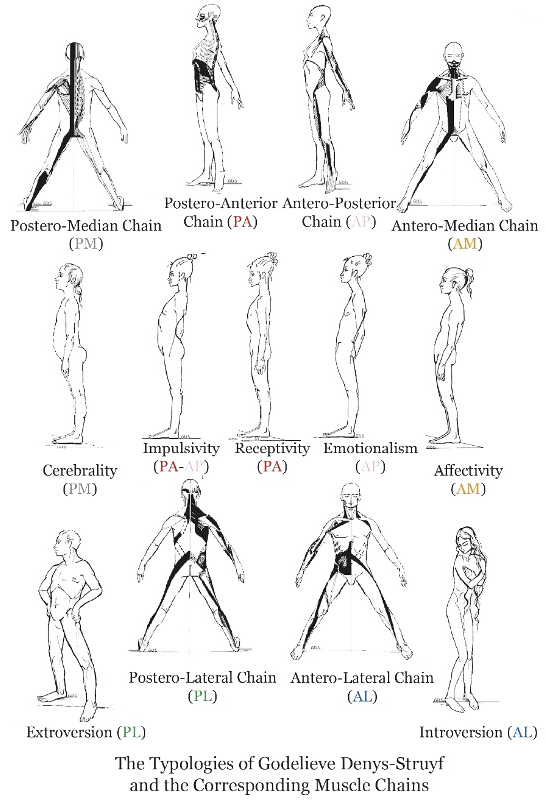What is the G.D.S. muscle and articulation chains method all about?
G.D.S. muscle and articulation chains is one of the modalities I use to assess and treat patients. It is a holistic approach which can be used for most musculoskeletal conditions. This method integrates human biomechanics with visceral connections and psychological behaviour.
The name of the method comes from Belgian physiotherapist and osteopath Madame Godelieve Denys-Struyf. She categorised six functional muscle groups used in normal body movements, manifesting in certain types of posture into six types. The biomechanical aspect of this method was developed by Philippe Campignion.

In normal conditions there is mutual control and balance between six groups of muscle chains through which the body can express itself. However, when they work excessively due to pain, stress or injury it leads to increased muscle tension which forces the body into an abnormal stiff position and consequently reduces freedom of movement, resulting in characteristic postures.
The goal of G.D.S. therapy is to diagnose which chain suffers and is stiffened. The diagnosis consists of observing chains imprints in a standing position and performing elasticity tests to find out what the root cause of the problem is. Due to the fact that the chains complement each other, in order to maintain balance in the body, the therapist should work on three chains at the same time to make the therapeutic effects long-lasting and positive. The G.D.S techniques are pleasant for patients and are safe during pregnancy.
References:
- WHAT IS THE METHOD OF THE GDS MUSCULAR CHAINS?, from APGDS website (http://www.apgds.com/england/)
- Campignion P., “Muscles and articulation chains. G.D.S. method, biomechanical aspects. Basic notions. “, 2017, Paris Philippe Campignion
